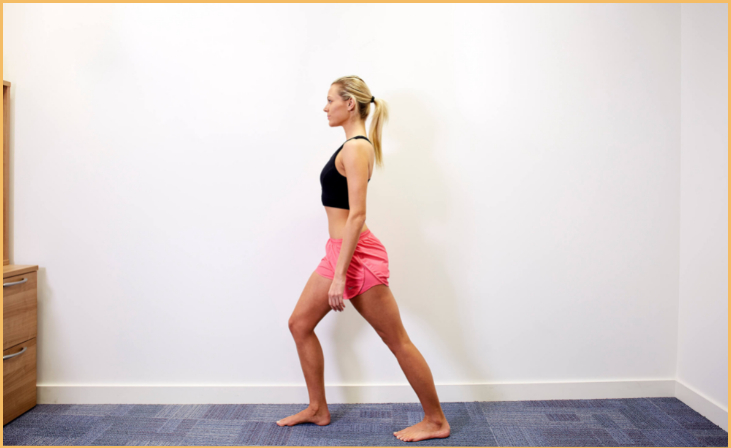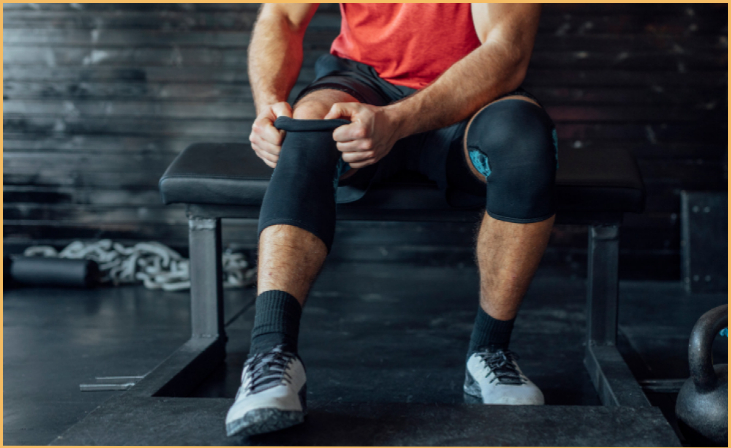Worst Things You’re Doing to Your Knees Every Day
Welcome to our comprehensive guide on the Worst Things You’re Doing to Your Knees Every Day. Your knees, the unsung heroes of your mobility, bear the brunt of your daily activities, yet they often don’t get the attention they deserve until they start to ache. In this fast-paced world, where time is precious and schedules are hectic, it’s easy to overlook the subtle signals your knees might be sending, indicating potential trouble.
Did you know that seemingly harmless habits can lead to significant knee issues over time? From the way you sit at your desk to the shoes you wear, every choice you make influences the health of your knees. In this guide, we’ll unravel the mysteries of knee health, exploring the intricate anatomy of this vital joint. We’ll delve into the common mistakes you might be making, habits that could be causing harm, and, most importantly, how you can protect and strengthen your knees.
So, if you’ve ever wondered why your knees ache or if you’re keen on maintaining their health proactively, you’re in the right place. Let’s embark on this journey to understand and safeguard one of your body’s most essential assets – your knees.
Understanding the Anatomy of the Knee
The knee, a remarkable hinge joint, is more than just the meeting point of your thigh bone (femur) and shinbone (tibia). It’s a complex marvel of engineering, consisting of bones, cartilage, ligaments, tendons, and muscles, all working in harmony to facilitate movement and support your body weight.
1. Bones: The femur (thighbone), tibia (shinbone), and patella (kneecap) are the three bones that make up the knee joint. The main joint is formed by the rounded ends of the femur and tibia, and the patella fits into a groove in the femur to facilitate knee movement.
2. Cartilage: Within the knee joint, there are two types of cartilage: articular cartilage and meniscus. Articular cartilage covers the ends of the femur, tibia, and patella, providing a smooth, gliding surface that reduces friction during movement. The meniscus, on the other hand, acts as a shock absorber between the femur and tibia, enhancing stability and cushioning the joint.
3. Ligaments: Ligaments are strong, fibrous tissues that connect bones to bones, providing stability to the joint. The anterior cruciate ligament (ACL), posterior cruciate ligament (PCL), medial collateral ligament (MCL), and lateral collateral ligament (LCL) are the four main ligaments in the knee. These ligaments stop the knee from rotating and moving excessively forward or backward.
4. Tendons: Tendons, which are strong bands of tissue, join bones and muscles. The quadriceps muscles are joined to the patella by the quadriceps tendon, which enables the knee to be extended. The patellar tendon, on the other hand, connects the patella to the tibia, enabling straightening of the leg.
5. Muscles: Several muscles surround the knee joint, providing support and allowing movement. The quadriceps muscles at the front of the thigh straighten the knee, while the hamstrings at the back of the thigh bend it. Additionally, the calf muscles help stabilise the knee during movement.
Also Read: Bliss Belly Fat Trimming Tea’s
The Impact of Poor Posture on Your Knees
Posture, the way you hold your body while sitting, standing, or moving, plays a pivotal role in maintaining the health of your knees. Poor posture can gradually lead to misalignment, increased strain, and, over time, chronic knee pain. Here’s how bad posture affects your knees:
1. Misalignment and Uneven Pressure: Poor posture, such as slouching or excessive curvature of the spine, can cause misalignment in the lower back and hips. This misalignment puts uneven pressure on your knee joints, leading to wear and tear of the cartilage and ligaments. This can lead to diseases like osteoarthritis over time.
2. Increased Stress on Ligaments: Incorrect posture, especially when standing or walking, can lead to hyperextension of the knee joint. This puts excessive stress on the ligaments, particularly the ACL and PCL, making them more susceptible to injuries. Ligament injuries can be painful and may require lengthy rehabilitation periods.
3. Muscle Imbalance: Poor posture often involves certain muscles being overused while others weaken due to lack of use. This imbalance can affect the muscles around the knee, leading to instability and reduced support for the joint. Weakened muscles can’t effectively absorb shock during movement, increasing the impact on your knees.
4. Compromised Blood Circulation: Incorrect posture, especially when sitting for prolonged periods, can compress blood vessels and nerves around your thighs and knees. This compromises blood circulation, depriving the knee tissues of oxygen and nutrients. Inadequate blood flow hampers the body’s natural healing processes, making it harder for the knees to recover from strain or injuries.
5. Development of Kyphosis and Lordosis: Poor posture can lead to conditions like kyphosis (hunchback) and lordosis (swayback). These conditions alter the natural curvature of the spine, causing a chain reaction that affects the alignment of the entire body, including the knees. Kyphosis and lordosis can create abnormal stress on the knee joints, exacerbating existing knee problems or causing new ones.
Worst Things You’re Doing to Your Knees Every Day
Your knees, although resilient, are not invincible. Everyday activities, often overlooked, can take a toll on these vital joints, leading to discomfort, pain, and even long-term damage. Let’s explore the worst things you might be doing to your knees daily without realizing it:
1. Ignoring Proper Warm-Ups and Cool-Downs

- The Mistake: Skipping warm-up exercises before physical activities and neglecting cool-down routines afterward.
- Impact: Insufficient warm-up can strain cold muscles and ligaments, while skipping cool-downs denies your knees the chance to relax and recover.
2. Sitting Incorrectly for Extended Periods
- The Mistake: Maintaining poor posture while sitting for hours, leading to misalignment and undue pressure on knees.
- Impact: Slouching or crossing legs excessively can strain knee ligaments and affect blood circulation, increasing the risk of pain and swelling.
3. Wearing Improper Footwear
- The Mistake: Choosing shoes without adequate support or regularly wearing high heels.
- Impact: Ill-fitting shoes or high heels alter your gait, affecting knee alignment and increasing stress on the joint, potentially leading to conditions like osteoarthritis.
4. Neglecting Weight Management
- The Mistake: Carrying excess body weight, which adds immense pressure on your knees, especially during activities like walking or climbing stairs.
- Impact: Obesity strains knee cartilage, leading to wear and tear, and significantly heightens the risk of developing knee-related issues.
5. Overexerting Without Proper Form
- The Mistake: Exercising intensely without paying attention to proper techniques and body mechanics.
- Impact: Incorrect forms during exercises stress knee joints, contributing to injuries like tendonitis and ligament sprains.
6. Ignoring Pain and Discomfort
- The Mistake: Dismissing recurring knee pain as temporary discomfort without seeking medical attention.
- Impact: Ignoring persistent knee pain could worsen underlying conditions, leading to chronic pain, limited mobility, or even disability.
7. Wearing Inadequate Knee Support

- The Mistake: Neglecting to provide your knees with proper support, especially during physically demanding activities.
- Impact: Failing to wear knee support such as braces or sleeves can leave your knees vulnerable to injury. These supports help stabilize the joint and reduce strain, making them essential for preventing damage during workouts or strenuous tasks. Skipping this precaution can lead to overexertion and long-term knee issues.
Also Read: The Ultimate Guide to Stretches for Runners
How to Protect Your Knees Every Day
Your knees, essential for everyday movements, deserve proactive care to ensure they remain strong and pain-free throughout your life. By adopting these practical strategies, you can protect your knees and maintain optimal joint health every day:
Incorporate Knee-Strengthening Exercises
- Exercise Regularly: Engage in low-impact exercises like walking, swimming, or cycling to strengthen the muscles around your knees without excessive stress.
- Strength Training: Focus on exercises that target quadriceps, hamstrings, and calf muscles. Examples include squats, lunges, leg presses, and leg curls. Talk to a fitness trainer about making your own workout plans.
Maintain a Balanced Diet for Knee Health
- Omega-3 Fatty Acids: Include sources like salmon, walnuts, and flaxseeds. These fatty acids reduce inflammation, promoting joint health.
- Antioxidant-Rich Foods: Consume fruits and vegetables like berries, oranges, and spinach, which are packed with antioxidants, vital for joint repair and maintenance.
- Calcium and Vitamin D: Ensure an adequate intake to support bone health. Dairy products, leafy greens, and sunlight exposure are excellent sources.
Utilize Knee Support and Protection
- Wear the right shoes: Make an investment in a pair of padded, arch-supporting footwear. For specific activities like running or hiking, choose footwear designed for those purposes.
- Consider Knee Braces: If you have a history of knee injuries or engage in high-impact sports, consider using knee braces or sleeves for additional support.
Maintain a Healthy Weight
- Weight Management: Maintain a healthy body weight to reduce the load on your knees. Even a slight weight reduction can significantly decrease the risk of knee-related problems.
Prioritize Proper Posture
- Ergonomic Adjustments: Whether at work or home, ensure your seating and workspace are ergonomically designed. Use chairs with proper lumbar support and sit with your feet flat on the floor to maintain good posture.
- Regular Breaks: If your job involves prolonged sitting, take short breaks to stand, stretch, and walk around. This prevents stiffness and promotes circulation.
Stay Hydrated and Stretch Regularly
- Hydration: Drink an adequate amount of water daily to keep your joints lubricated. Proper hydration ensures that your joints function smoothly.
- Regular Stretching: Incorporate knee-focused stretches into your routine to maintain flexibility. Stretch your quadriceps, hamstrings, and calf muscles gently to improve joint range of motion.
Listen to Your Body and Seek Medical Advice

- Regular Checkups: Schedule regular checkups with a healthcare professional, especially if you experience persistent knee pain, swelling, or limited mobility.
- Prompt Action: Don’t ignore knee pain. Rest, ice, compression, and elevation (RICE) can help alleviate acute pain.
Also Read: Best Free Weight Exercises for a Powerful Physique
In the pursuit of a healthier, pain-free life, your knees play a vital role. By understanding the habits that can harm them and adopting proactive measures, you empower yourself to protect your joint health. Embrace the wisdom of proper exercise, balanced nutrition, supportive footwear, and regular check-ups. By making these mindful choices, you ensure that your knees remain strong, flexible, and ready for every step of your life’s journey. Here’s to a future filled with active, pain-free living.
FAQs
Poor posture misaligns your spine, causing uneven pressure on your knees. It can lead to strain on ligaments, muscle imbalances, and limited range of motion, contributing to knee problems.
Yes, high heels alter your natural gait, putting extra pressure on your knees. Over time, this can lead to joint misalignment and increase the risk of conditions like osteoarthritis.




